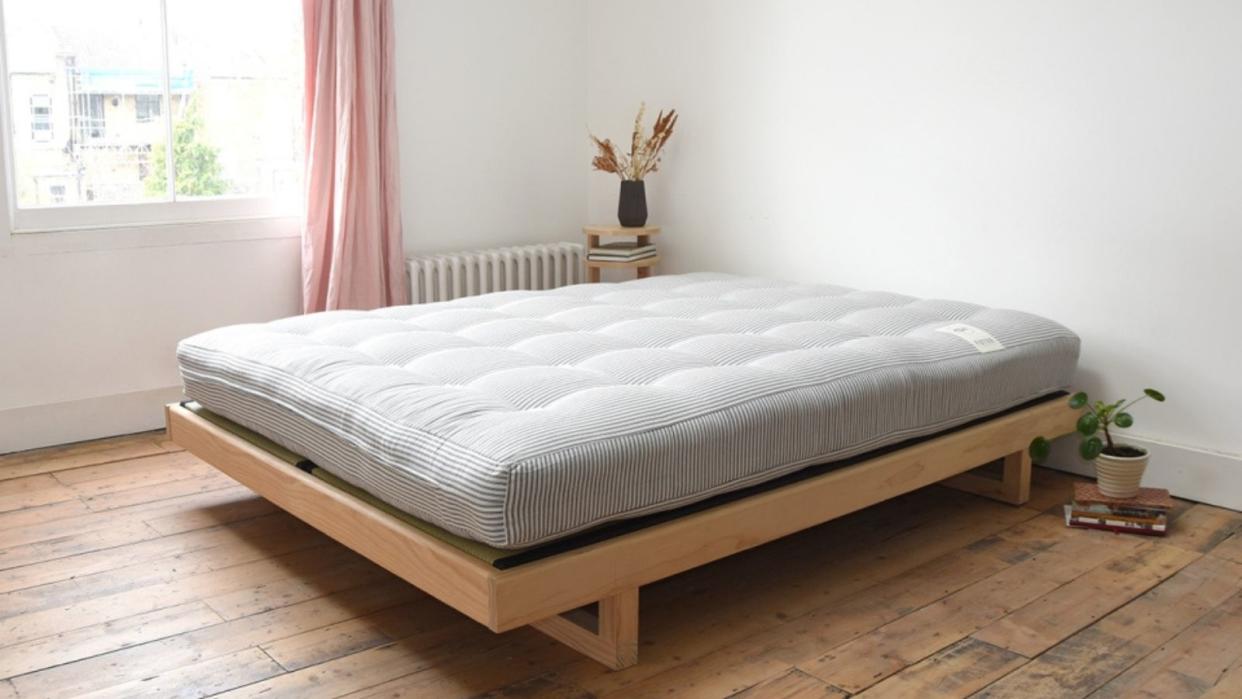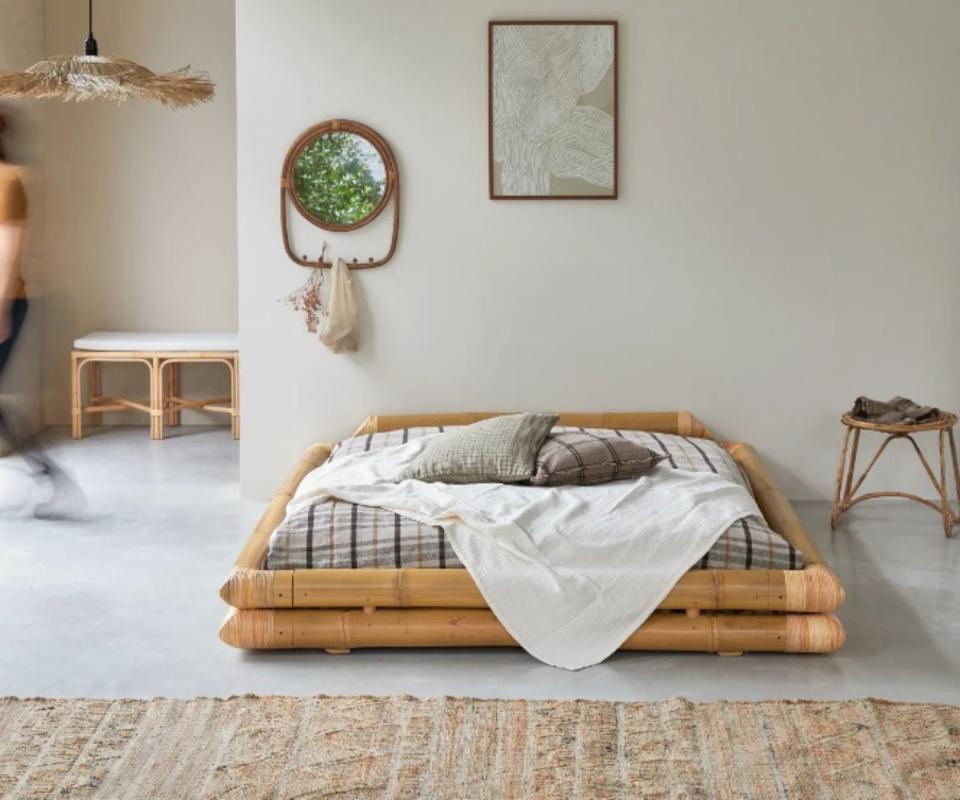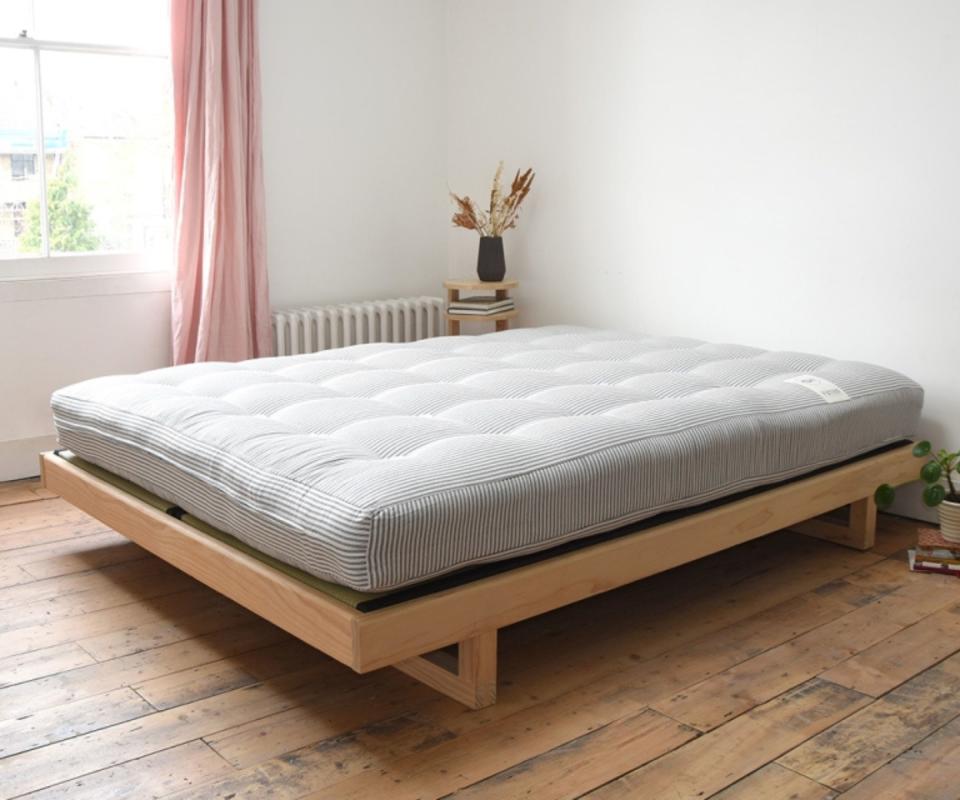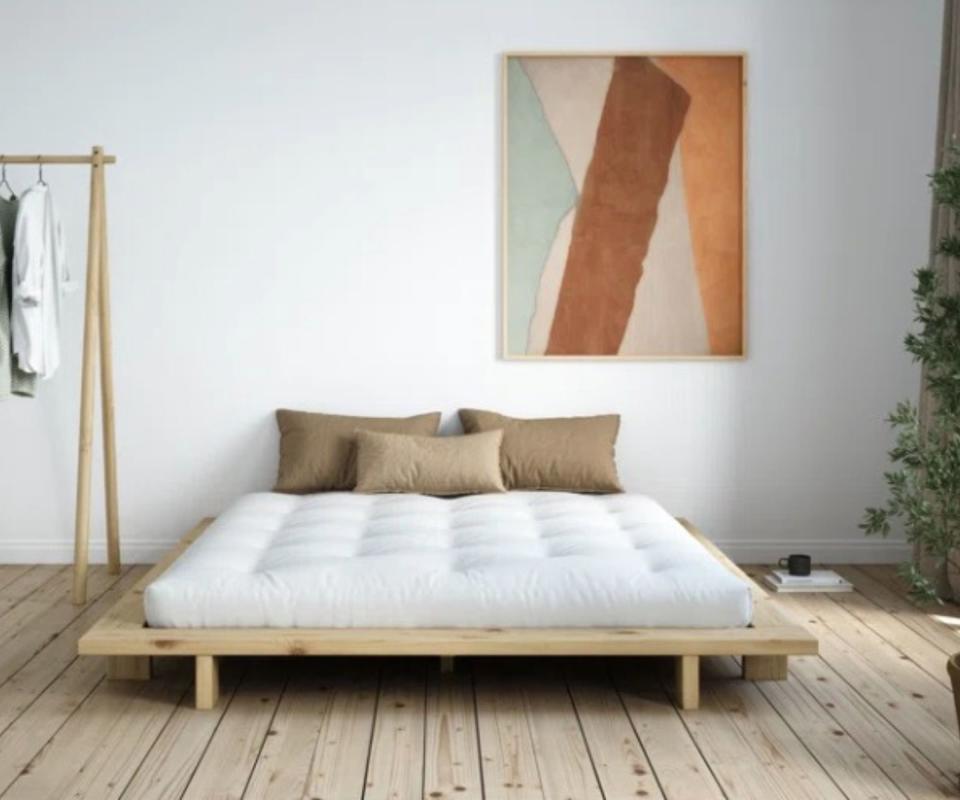What is a futon mattress? Everything you need to know about this flexible folding bed

If you’re on the hunt for an affordable, adaptable piece of furns.iture that suits a small space, the futon handily ticks all of those boxes. Folded up, it’s a comfy sofa that’s ideal for relaxing or entertaining friends. Unfold it and it becomes a bed, ready to offer you or your guests a night of restful sleep.
You might wonder what futons are, and how they're any different from a regular mattress. We’ve got you covered, as we’ve got the lowdown on all things futon.
We’ll start by traveling back to 17th century Japan, where futons began as roll-out mattresses reserved for nobility. Then we’ll fast-forward to the 1980s, when the futon had a makeover for Western sensibilities – and continues to evolve as more than a functional piece of furniture.
Whether you’re curious if a futon is the right fit for your room, or if it’s better to skip it and look for the best mattress instead, we've got you covered. Here’s everything you need to know about futons and futon mattresse
What is a futon mattress?

A futon is a foldable bed that can be stored away until you’re ready to sleep on it. There are two types: traditional Japanese futons and Western-style futons. (We’ll be focusing on the latter throughout this article.)
The traditional Japanese futon dates back to the 17th century, when it was reserved for nobility. It consists of a mattress (or shikibuton), which is a thin, firm mattress filled with cotton, wool, or synthetic fibers. It's meant to be laid out on the floor for sleeping and rolled up when not in use. Given that Japanese homes are typically smaller, traditional futons remain a practical and popular choice in Japan today.
In the 1980s, designer William Brouwer introduced the Western-style futon. Unlike its Japanese counterpart, a Western futon mattress more closely resembles a standard mattress — it’s thicker, filled with foam and/or springs, and placed on a wood or metal frame that adjusts from a bed to a sofa. This adaptable, space-saving design makes it perfect for small spaces like dorms and apartments; it’s also a savvy option for a guest bed.
What are the pros of a futon mattress?
Is a futon right for you? Below are five reasons to consider a futon over a standard bed or a traditional sleeper sofa:
1. It’s a great fit for cramped quarters
If you live in a studio apartment or college dorm, a futon is an excellent way to maximize your space. Since it converts between a bed and a sofa, it adds extra seating for your guests while also giving you more room to roam about. Futon mattresses come in a range of sizes but the most common are full and queen, meaning you likely won't have to settle for the limited real estate of a twin bed in your cozy living space.
2. It’s cheaper than buying a dedicated bed

It’s possible to bring home a futon frame and mattress for under $1,000. Standard mattresses can cost at least a grand, and that’s before factoring in the bed frame and optional elements like a headboard or box spring. If you’re working with a limited budget or aren’t keen on shelling out for a full-blown guest bed, a futon is fantastic value. Note that the price of a futon will vary based on the quality of materials and its design – expect to pay a premium for a futon that resembles a sofa or loveseat in its seated position.
3. It’s comfortable (if you like a firm mattress)
Futon mattresses aren’t as thick as standard mattresses – they measure between three and nine inches tall. This makes sense since they need to be thin enough to fold into place. This shorter profile will yield a firmer bed feel, which should suit stomach sleepers or anyone who likes a harder surface. While there are foam futon mattresses that’ll contour your body, anticipate a futon mattress to be firmer than you’re accustomed to with a traditional bed.
4. It makes it possible to accommodate guests
A futon is ideal for hosting overnight guests without a guest room. It’s a simple way to provide a place to sleep at a moment’s notice. What’s more, a futon mattress is generally more comfortable than a sofa bed, which can only fit a 4-to-5-inch mattress, or an air mattress that lacks support and firmness
5. It’s practical if you move house or rearrange your space often
Transporting a bed can be a hassle, especially when it has multiple parts like slats, a headboard, a box spring, and the mattress itself. A futon, by comparison, is more portable and easier to maneuver. Whether you always have the itch to rearrange your bedroom, your career has you relocating a lot, or you're a student moving between a dorm and a new apartment, the compact design of a futon will make the moving process smoother.
What are the cons of a futon mattress?
A futon isn’t the best choice for everyone. Here are three instances in which a traditional bed or sofa bed might be a better fit:
1. It’s not supportive enough to be a primary bed

The thin profile of a futon mattress makes it firmer, but that doesn’t mean it’s better at propping up your body. Standard mattresses are constructed with several layers to help ease pressure, align your spine, and support your entire body. Think twice before making a futon your primary resting spot, especially if you sleep on your side and like a softer bed. Worse yet, the futon’s lack of support can lead to back pain and other discomfort.
2. It could clash with your your aesthetic
Design-wise, Western futons have evolved over the last several decades, but they still mostly look like beds. Their basic, no-frills appearance may not mesh with your style, and could look very out of place in a common area. Sofa beds, on the other hand, can come in a variety of styles – and while they may not be as comfortable to sleep on as futon mattresses, you’ll have an easier time finding a sofa bed that blends well with the rest of your decor.
3. It’ll wear down faster than a standard bed
A futon works best as a lightly-used guest bed or a statement piece that’s admired from afar. The mechanisms that allow a futon to change from a seat to a bed can wear down over time – the more you convert it, the quicker this’ll happen. Meanwhile, a futon mattress can last you around 10 years with limited use, but if you’re sleeping or sitting on it all the time, it’ll only last up to five years. (However, adding a futon cover can help it last longer.)
Best futon mattress

Mozaic Futon Mattress
A super comfy floor mattress that's fill material includes CertiPUR-US certified foam wrapped in cotton, which is naturally breathable to reduce heat absorption. It comes in different thickness depending on how soft or firm you like to sleep and there are a few color choices too.

Alwyn Home Futon Mattress
There are many gushing reviews for this futon mattress on Wayfair (over 1,000 of them give it five stars). This mattress is said to be comfortable and supportive – a great alternative to a blow up mattress.

MAXYOYO Futon Mattress
This rollable futon mattress boasts over 8,000 great reviews on Amazon. It's praised for being super comfortable, easy to store and a great price. Plus it comes in plenty of color options and sizes.
Futon mattress FAQs
Is a futon mattress comfortable to sleep on every night?
This will depend on what you need to be cozy at night. For those who benefit from or prefer a harder sleep surface, a futon mattress could be just what you need to achieve a restful night’s sleep. A standard mattress offers more variety when it comes to firmness, construction, and materials so it’ll suit a broader range of sleepers.
If you're tight on space and/or cash, a futon could make the most sense for you. Fortunately, you can make it softer by adding a separate mattress topper, but you'll have to remember to remove the topper each time you convert your futon back into a sofa.
Is a futon the same as a sofa bed or a daybed?
A futon is different from a sofa bed and a daybed, but each serves a dual purpose. A futon features a foldable frame with a mattress that acts as both seating and a sleeping space. A sofa bed resembles a normal sofa, but stashed underneath the cushions is a queen-sized mattress that you can pull out. A daybed is made to resemble a sofa, but with a twin mattress on top – no conversion is needed here, so it’s always ready for you to sleep on.
What’s the difference between a futon mattress and a regular mattress?
A futon mattress acts as both a seat and a bed, so it’s thinner and firmer than a standard mattress that’s solely built for snoozing. The thickness of a futon ranges from three to nine inches; it usually has springs, foam, or a combination of the two. Standard mattresses can top 14 inches (or higher) and feature a wider array of materials like memory foam, latex, and special temperature-regulating fibers. Cost-wise, a full futon set (frame and mattress) is often less expensive than a regular mattress on its own, but a traditional bed set-up is more durable for nightly use.
A futon mattress can be a great choice if you need something temporary – a spare bed that can be folded out of sight when not in use. It can be an affordable option too and great if have a smaller living space like a dorm. However, they aren't the most supportive of bed types and we probably wouldn't recommend using a futon mattress as your long-term bed solution. Stick with just using it for guests or if you are awaiting a more permanent solution.

